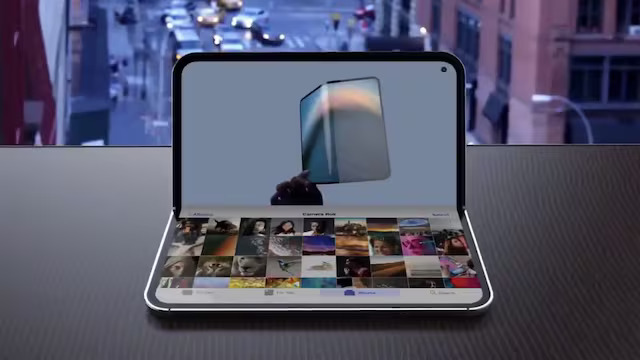In the constantly evolving smartphone landscape, foldable technology is emerging as the next frontier of innovation. While companies like Samsung, Huawei, and Motorola have already introduced foldable devices, Apple has been notably absent from this segment—until now. According to a recent investor note from JPMorgan analysts, Apple is on track to introduce its first foldable iPhone by 2026. This projection signals a pivotal shift in Apple’s product strategy and could potentially redefine the foldable smartphone market.
A Conservative Yet Calculated Approach by Apple
Apple has always been known for its methodical approach to product innovation. Unlike its Android competitors who raced to be first-to-market with foldable devices, Apple has historically prioritized perfecting technology over beating the competition. The delayed entry into the foldable market is likely a strategic move designed to avoid the pitfalls that plagued early foldable smartphones, such as durability issues, software optimization challenges, and battery constraints.
JPMorgan’s report suggests that Apple is currently in the advanced development phase, working with several key suppliers in the display and hinge components industry. The firm’s analysts believe Apple is waiting for the technology to mature further and for manufacturing yields to reach a level that aligns with the company’s stringent quality standards.
What the 2026 Timeline Implies
The 2026 timeline is viewed by industry insiders as both realistic and strategic. Launching a foldable iPhone in that window would give Apple ample time to refine its hardware design, enhance software compatibility, and develop a compelling user experience that justifies the likely premium price tag.
According to JPMorgan, Apple could be exploring two potential form factors: a clamshell-style device similar to the Samsung Galaxy Z Flip and a book-style foldable similar to the Galaxy Z Fold series. The company may even be working on prototypes of both to evaluate which format better aligns with user expectations and market trends.
Supply Chain Indicators Support the Forecast
JPMorgan’s projections are supported by increased activity across Apple’s supply chain. Notably, display manufacturers such as Samsung Display and LG Display are reportedly preparing foldable OLED panels that meet Apple’s exacting requirements. These suppliers are investing heavily in equipment upgrades and production capacity tailored for foldable form factors.
Meanwhile, Apple has also filed numerous patents related to foldable technology over the past few years. These patents cover various hinge mechanisms, self-healing display surfaces, and fold-resistant materials—indicating the company’s serious interest in developing a robust foldable device.
Competitive Landscape and Market Positioning
The foldable smartphone market, while still niche, is growing steadily. IDC estimates that foldable phone shipments will reach nearly 50 million units by 2026, up from just under 20 million in 2023. Samsung currently dominates the space with a significant market share, but Apple’s entry could disrupt this dynamic entirely.
An Apple foldable iPhone would likely attract a wave of premium users looking for innovation without compromising on performance or ecosystem integration. It could also help Apple tap into users looking to replace both their iPhone and iPad with a single, hybrid device.
JPMorgan also speculates that Apple might brand the new device differently, possibly aligning it with its iPad lineup, especially if the device folds out to a tablet-sized screen. This positioning could blur the lines between smartphones and tablets, offering new use cases for productivity, content creation, and entertainment.
Technical Expectations and Features
Although specifics remain speculative, analysts predict that Apple’s foldable iPhone could feature:
- A 7.5 to 8-inch unfolded display
- Next-generation OLED or micro-LED panel for better durability and power efficiency
- Enhanced hinge mechanism tested for long-term durability
- Compatibility with Apple Pencil and accessories
- A reinforced iOS version or entirely new foldable OS layer for multitasking
- M-series chips or A-series hybrid processors to support high performance
Apple will likely emphasize seamless software integration, one of its traditional strengths, ensuring that apps adapt fluidly to folding and unfolding screens. The company could also introduce unique fold-specific features like dual-screen modes, drag-and-drop multitasking, and continuity features with Mac and iPadOS.
Potential Impact on Apple’s Ecosystem
Apple’s ecosystem is one of its biggest competitive advantages. Integrating a foldable iPhone into this ecosystem would open new possibilities. For instance, users might benefit from a more immersive Apple Arcade experience, new multitasking capabilities for work and creative applications, and extended Apple Pencil functionality.
Moreover, the foldable iPhone could trigger updates across the entire Apple ecosystem, including iCloud, iWork, FaceTime, and Apple Health, to better support foldable experiences. If priced competitively and engineered thoughtfully, the device could also cannibalize a segment of the iPad market, especially among professionals and tech enthusiasts.
Risks and Challenges Ahead
Despite the optimism, challenges remain. Foldable phones still face hurdles related to screen durability, battery life, and cost efficiency. Apple will need to deliver on all these fronts to justify its late entry.
There’s also the pricing factor. Foldable devices are notoriously expensive, and Apple’s version will likely start north of $1,500. Whether users are willing to pay this premium for innovation remains to be seen, especially when the foldable format is still proving its long-term value.
JPMorgan acknowledges these risks but remains confident in Apple’s ability to overcome them, citing the company’s history of redefining product categories—even when arriving late.
Final Thoughts
The idea of a foldable iPhone has long stirred excitement among Apple fans and tech watchers. With JPMorgan now backing a 2026 launch, expectations are intensifying. While Apple has yet to confirm any plans officially, the mounting evidence and increased supplier engagement suggest that something big is on the horizon.
If the timeline holds true, 2026 could mark Apple’s most significant hardware innovation since the launch of the Apple Watch or the introduction of Apple Silicon. The foldable iPhone may not just change how we use smartphones—it could reshape the entire mobile device market.












